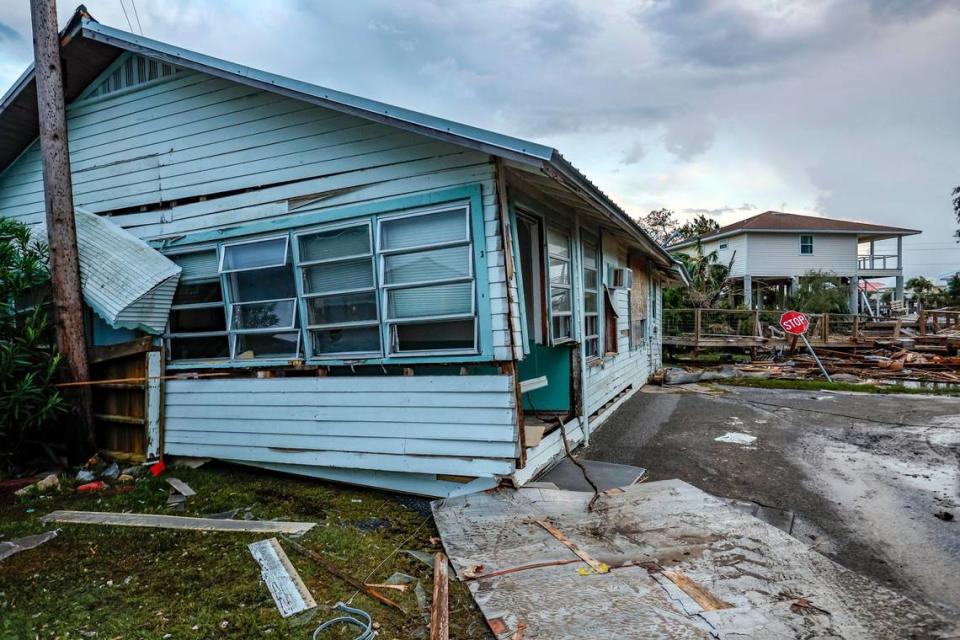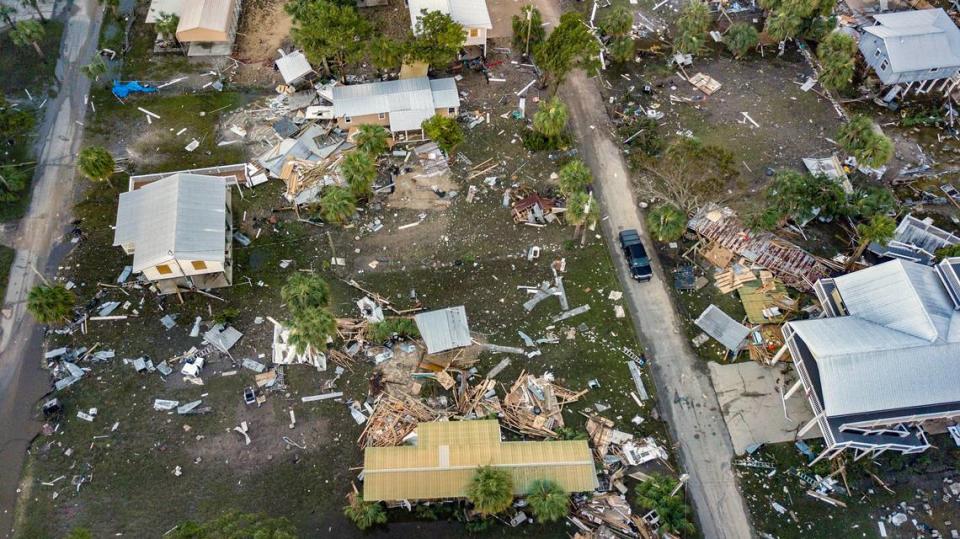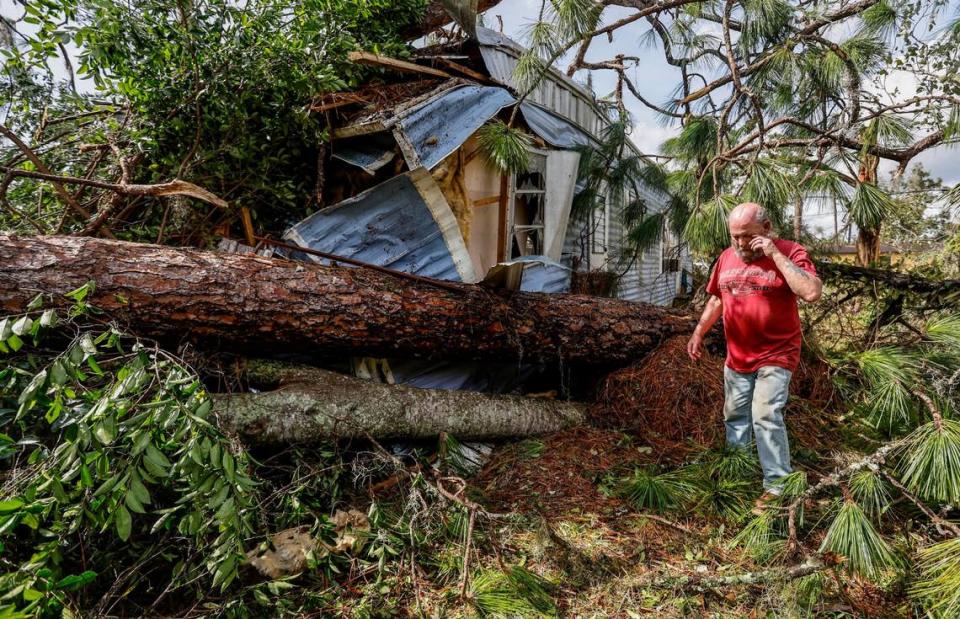With climate change, is it time to consider a Category 6 hurricane?
In a warming world where rising ocean temperatures give fuel to a new breed of ultra-strong hurricanes, does a wind scale that maxes out at Category 5 go far enough?
Or could there be a Category 6 hurricane?
Researchers raise those questions in a study, released today, that analyzes the nearly 200 Category 5 cyclones that have spun up globally since 1980.
The study’s authors claim five of those storms had wind speeds higher than 192 mph, and they could be classified as a hypothetical “Category 6 storm. All five of those storms have occurred since 2013, and the study points to rising wind speeds from climate-fueled ocean heating.
“What we’re trying to say is that the most intense storms, and the windiest storms, are becoming windier because of climate change,” said Michael Wehner, a climate scientist at the California-based Lawrence Berkeley National Laboratory and the study’s lead author.
The Saffir-Simpson Hurricane Wind Scale, born in the early 1970s, ranks storms based on wind speed and considers a storm with a sustained wind of 157 mph or higher as a Category 5.
But the scale has long been questioned as a tool that doesn’t truly capture the varying risks that come with a hurricane, including storm surge, tornadoes and rainfall.
What we know — and don’t — about how climate change impacts hurricanes like Ian
Wehner acknowledged that his proposal to add a Category 6 hurricane doesn’t address the pitfalls of the Saffir-Simpson scale. But, he said, it does expand on a scale that is well known by the general public, and it hopefully evolves the conversation on how a hurricane’s wind hazards will continue to grow in a world warming from human-caused climate change.
The National Hurricane Center would be the agency tasked with updating the scale, but even the study’s authors aren’t advocating for the agency to concoct an updated Saffir-Simpson. It’s a change that would appear to be unlikely, anyway: The center’s director, Michael Brennan, said the agency doesn’t want to over emphasize wind hazards by placing too much focus on the storm’s category.

About 90% of tropical cyclone deaths in the United States are from water, not wind, Brennan noted.
“We’ve tried to steer the focus toward the individual hazards, which include storm surge, wind, rainfall, tornadoes and rip currents, instead of the particular category of the storm, which only provides information about the hazard from wind,” Brennan said in a statement.
Folks misunderstand hurricane ‘cone of uncertainty,’ study shows. Time for a change?
“Category 5 on the Saffir-Simpson scale already captures ‘catastrophic damage’ from wind, so it’s not clear that there would be a need for another category even if storms were to get stronger.”
Jeff Masters, a hurricane scientist formerly with the National Oceanic and Atmospheric Administration, agreed updating the scale to include a Category 6 could raise more awareness around the growing threats of climate change.
But, Masters added, it’s unclear that a “Category 6” addition would help further protect lives and property if a storm that strong was barreling toward the Florida coast. And with so few storms in the hypothetical category, it would be hard to do a detailed statistical study.
Still, the current hurricane wind scale is open-ended, Masters said. That means a low-end Category 5, with 160 mph winds, is in the same category as a storm with 195 mph winds. Both are catastrophic, of course, but the latter could do exponentially more damage.

“If a Cat. 6 was coming your way, I don’t know if it would change how you’d prepare,” Masters said. “You’re going to evacuate either way. Or you’re foolish.”
There is general confidence that the strongest cyclones will get stronger in a warming climate. There is less confidence, though, that the total number of ultra-strong storms will increase, he said.
Wehner and his team published their work in the Proceedings of the National Academy of Sciences, a global peer-reviewed journal that covers biological, physical and social sciences. The study found that, with two degrees Celsius of global warming, the risk of a Category 6 storm doubles in the Gulf of Mexico.
For their research, which took roughly two years, scientists analyzed the 197 Category 5 tropical cyclones between 1980 and 2021. The five they identified as hypothetical Category 6 storms included the windiest storm on record, a 2015 cyclone named Patricia that ripped through the Eastern Pacific Ocean with maximum wind speeds of 215 mph.
The remaining four “Category 6” storms all emerged in the Western Pacific Ocean, according to the study. About 57% of the planet’s Category 5 storms occur in the Western Pacific, which wields a vast swath of warm water. A growing number of these “super-storms” will primarily happen there, Masters said.

Only four Category 5 storms have made landfall in the United States, and three of those hit Florida, according to the National Hurricane Center.
In 1935, a Labor Day hurricane barreled into the Florida Keys and killed more than 400 people. Then came Hurricane Andrew in 1992, which made landfall in South Florida, killed more than 25 people and caused more than $26 billion in damage. Hurricane Michael swept through Florida’s Panhandle in 2018 and was directly responsible for 16 deaths.
In a prepared statement, James Kossin, a science advisor at climate data nonprofit First Street Foundation and an author on the study, said the public needs to be better warned about hurricane risks that the current wind scale doesn’t address.
While adding a Category 6 hurricane wouldn’t solve that issue, it moves the conversation forward about climate change, Kossin said.
“It could raise awareness about the perils of the increased risk of major hurricanes due to global warming,” he said.
This story was produced in partnership with the Florida Climate Reporting Network, a multi-newsroom initiative founded by the Miami Herald, the South Florida Sun Sentinel, The Palm Beach Post, the Orlando Sentinel, WLRN Public Media and the Tampa Bay Times.

